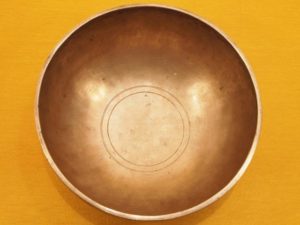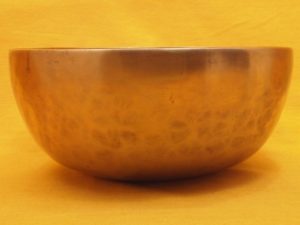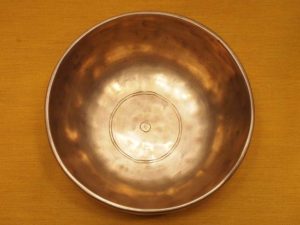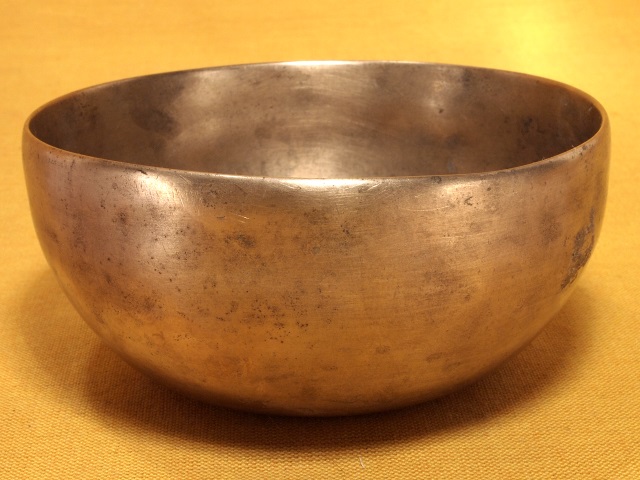What is a singing bowl?
A singing bowl is a type of bell that is faced upright used to produce a sound that invokes a deep state of relaxation which helps to enter into meditation easily, healing of body, Stress management, and other diseases. Since they are quintessential for meditation, they are used in Buddhist altars, temples, monasteries and meditation halls all over the world. The sound of a singing bowl is melodious extra-ordinary, amusing, a sledgehammer, long-lasting euphonic hum that can be both invigorating and tranquility simultaneously. They are mostly found in bowl-shaped. The sizes of bowls range between a few centimeters and a meter across.

Generally, singing bowls are made from an alloy of copper and tin, in some bowls, it is also found with other elements added. This is also known as bell metal. Sometimes, some impurities or additions are also found in the alloy, although variability can be made from the different alloy colors. Nowadays, in the West, crystal singing bowls made of quartz have become well known. These are treated by some to bring out a more powerful effect than the traditional metal bells.
Singing Bowl in Past
In the past, it is also said that singing bowls were made of an alloy that contains motley metals, generally seven. Those seven metals are silver, gold, mercury, copper, lead (or antimony), tin, and iron; connected with a heavenly body or a chakra. This was considered as a result of an analysis of two bowls in 1996 AD at Concordia University. The analysis detected them to be substantial of bell metal-with little amounts mixed with tinctures -of other metals like iron, lead, zinc, and silver, etc. The measuring instrument did not find gold or mercury within its accuracy.

Sometimes, singing bowls are incorporated with meteoritic iron. Re-formed crushed synthetic crystal is sometimes used to make modern ‘crystal’ bowls. The usual manufacturing method of standing bell is casting the melted metal, assisted by hand-hammering to obtain the expected appearance. The same method is followed to form modern bells/bowls, yet sometimes machine-lathing is used for shaping.
The conventional ways of manufacturing the bowls have been lost for more than 50 years, but the bowl with modern manufacturing techniques can produce beautiful tones. Contemporarily, bowls are both hand-hammered and machine-made, or an enarthrosis of both style. The modern bowls come from Nepal and are regarded to be the best.
High-Quality Bowl
The finished product is usually inscribed with a message of well wishes and mantra or for decoration with Aum, Swastik sign, rings, stars leaves or dots. Bowls from Nepal even rarely inscribed in the Devanagari script.
High-quality bronze and addition of different metals, inclusive gold, silver, and expensive meteoric iron (Tibetan name – “sky-metal” or thogcha) were used to manufacture bygone bowls. The presence of different types of ore is supposed to be the cause of the multiphonic overtones of some ancient and antique bowls. These harmonic overtones account for a high value used on antique bowl along with the mellow tones created by age.

The singing bowl is more vindicate to term as “Himalayan Bowls”, since they are found everywhere in the Himalayan belt of Tibet, Nepal, and India; though they are oft termed as Tibetan Singing Bowls. Their various manifestations are also found in Japan, Korea, Mongolia, and China.
It is a challenge to find the difference between a true antique singing bowl and a modern bowl, as it is comparatively easy to “age” the countenance of a new bowl so that it is very similar to an antique. High-quality modern bowls are efficient to make a beautiful sound, but it is noticeable that age can create the richest, mellowest tones.
In summary, a singing bowl can be defined as an object made up of different metals to produce a sound which soothes the mind and cleanse the environment, also used for many purposes.
For more details- see how to choose high quality bowl
Different names of a singing bowl
Singing bowls are known by a diffuse multiformity of terms in the West, such as bell, basins, cups or gongs. Some particular names comprise prayer bowl, resting bell, Buddha bowl, Tibetan bell, Himalayan bowl, rin gong, cup gong, and bowl gong. And those which are capable of producing a sustained musical note are highly referred to as a Tibetan singing bowl or singing bowl.
Similarly, some other terms including Buddhist bell Buddha bell, campana di temple, cup bell, temple bell, Buddha temple bell, Japanese temple bell, etc are used for contemporary classical music scores. In Japan, the names for standing type bells vary among Buddhist sects. The bell or bowl may be called dobachi , rin, kin, keisu, sahari , kinsu, or uchinarashi, among other things. The term “Daikin” is given, sometimes, for large temple bells, while mini sizes for a home purpose are called ‘namarin’.

